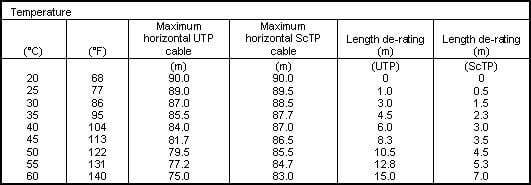Wondering if weather affects your CCTV system, well that would be a huge yes. At OzSpy we have helped over 100,000 people with security, and when there is a weather event, we see our switchboard light up. Most are camera service requests in that area, all of which are older systems where the waterproofing has failed over time or something has changed, or it is a once in a decade weather event.
Firstly to be accurate, this generally does not apply to COAX as it has a higher maximum temperature than Cat5/5e/6, and it’s jacket is not permeable nor does it encourage a capillary action that can draw water into the cable like network cable can.
Networks cable, or Cat5/5e/6 on the other hand is highly susceptible to moisture and temperature and creates a strong capillary action drawing water and moisture deep into the cable if a raw end or cut is exposed to water.
In most installations, the fluctuation of data speed capability due to water, humidity and temperature should not affect your system, but in severe cases, it will.
If you see your system behaving erratically in rain events, check your camera bases and make sure your roof isn’t leaking.
Temperature
Inside an Australian roof in summer temperatures can soar over 70 degrees centigrade, and as an example, in Brisbane the average humidity ranges from 50 per cent in winter to 65 – 70 percent in Summer. So what does that mean, and how does it affect the cable.
There are a couple of key specs to note about network cable which are: it has a top working temperature of 55 degrees Celsius, it has a semi permeable PVC jacket, the twisted pairs create a capillary action drawing water from the ends or cuts, and it’s not UV rated.
Now you may ask, as others before you have, how come you have seen it used outdoors before?
Well network cable is rated for data transfer speed, so heat, length of cable and water ingress all reduce that. For example, below is an image from Fluke Networks website which clearly shows that as the temp rises, so does the length it works shortens. In fact a really hot summer day where a roof cavity is over 70 degrees, the network cable can be reduced by almost 50% capacity.

If you are running a low quality, low resolution system, you will not notice it as the data from these cameras is so low it still falls within the rated performance, however if you are running high resolution, or multiple cameras on one cable, expect some drop outs. If that same cable is near 100m long, it will simply stop functioning until the temp drops under 50-60 degrees centigrade and/or the air dries out.
An easy way to see if your network cable is struggling is to reduce the resolution of your cameras down to 1mp and wait. If you start noticing improvement, it’s probably just wet. Sometimes this test does not work as there is water in the connectors, so just wait a few days after the rain has stopped and try again. Keep in mind that the water won’t evaporate whilst the air is humid, so usually a few days after the ground has dried after rain, and your cable will start drying out by itself and your cameras will start reappearing.
Water & Humidity
Whilst there are no such graphs for humidity, the ingress of water into the cable can have a serious effect on its ability to transfer data. In some cases, cables that are already near the length limit may fail after flooding or become intermittent during extreme rain evens when humidity is peaking. This is because when the cable gets wet, its performance is reduced, which affects impedance and other specifications of the cable.
Standard Category 5e and Category 6 cables have a PVC coating and are designed for indoor use and are not suitable for use in wet conditions. Cables designed for use outdoors, where moisture or water is present in any quantity, incorporate measures such as barrier tapes and gel filling to avoid water ingress and humidity issues, these can be costly and sometimes reduce data performance as well could affect fire ratings.
If the cable has had ingress of impure water, for example where it was soaked with water that had cleaning agents or other acid/alkaline substances. This cable is unlikely to be ok and should be replaced.
If you have cameras that seem to disappear, act erratic or just generally don’t seem right, and if you have Cat5/5e/6 cable, and it has been particularly wet. We recommend waiting a few weeks to let you cables dry out and most likely your system will be fine. Remember, just because it’s stopped raining, the water is still in the ground and the air is heavy with humidity which slows down the ability for the cable to dry out.
Remember, a few sunny days most likely won’t fix it, be patient, let your cables dry out, and once they have, it would be a good idea to check around the camera bases to ensure water is not getting in.
UV
Cat5/5e/6 is not UV rated and should not be used outside unless inside conduit.
